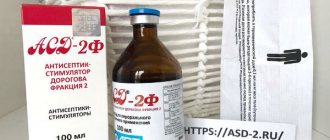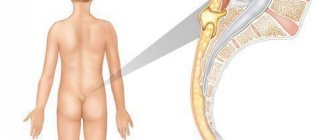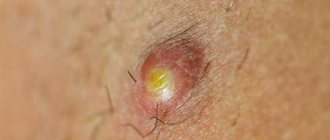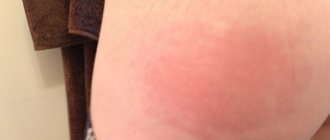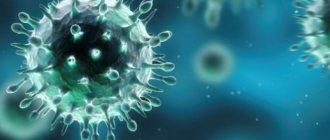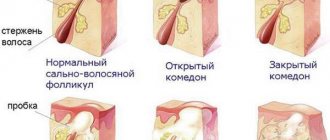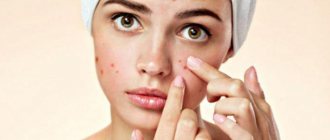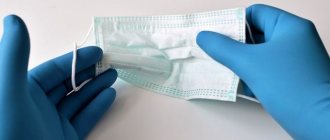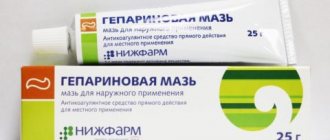Is it dangerous
It is safe to treat boils at home only at an early stage.
This applies not only to iodine, but also to any other remedy. If the process has already started, it is better not to be lazy and go to the doctor - this way you are guaranteed to get rid of the problem and not harm your health. If inflammation has just begun to develop, you can cauterize it with iodine to prevent further development of the process. At the same time, you need to remember that you are allowed to smear barley with iodine solution no more than three times a day, otherwise a burn may occur. By penetrating the skin, the drug prevents the infection from spreading, but if it has already reached the point of pus formation, cauterization with iodine will not solve the problem. You will need bactericidal ointments that draw out the infiltrate and kill the infection more effectively.
How and with what to treat a boil: photos and effective methods of getting rid of it
A furuncle (popular name boil) is a purulent inflammation of the connective tissue and hair follicle. The problem of painful formations on the skin is familiar to many people.
Improper treatment and squeezing out a boil can lead to serious consequences and even death. How to treat boils? How to prevent their occurrence? Let's figure it out.
- Reasons for appearance
- Locations
- Symptoms of the disease
- Diagnosis of the disease
- Treatment methods
- Medications
- Treatment at home
- Furuncle in children
- Skin care after illness
- Preventative tips
Reasons for appearance
Contrary to popular belief, boils do not only occur in people suffering from dermatological diseases. The appearance of a boil in a healthy person often causes confusion. Ignorance of the rules for handling abscesses and methods of treating boils leads to serious consequences.
There are several provoking factors:
- increased sebum secretion;
- increased sweating;
- poor skin hygiene;
- decreased immunity;
- frequent stress;
- hypothermia;
- contamination of the skin with chemicals;
- work in dusty conditions;
- scratching, microtrauma of the skin;
- susceptibility to staphylococcal infection.
Locations
Abscesses occur at the locations of hair follicles. In places where there are no follicles (on the feet, palms), boils do not appear.
“Favorite” localization places:
- on the neck;
- on the chest;
- boil on the buttock;
- boil on the face.
Sometimes boils occur:
- in the armpits;
- in the ear;
- on the foot;
- on the back;
- on the lower back;
- around the genitals;
- in the nose.
The most dangerous locations for abscesses:
- Auricle. A boil in the ear is characterized by throbbing pain, local fever, and twitching. Swelling and redness of the skin occurs. The pain spreads to the entire head, radiating to the temples.
- Face. One of the most dangerous types of boils. A single formation is small, many consider it an ordinary pimple, squeeze it out, and provoke the growth of a boil. Sometimes the abscess reaches 4 cm! If the abscess is handled incorrectly, the infection affects a large area.
- Nose. A boil in the nose occurs on the skin septum, on the wings of the nose from the outside or inside. The sebaceous gland or hair follicle becomes inflamed, swollen, pain and discomfort are felt. Many cases of boils in the nose require emergency surgery.
- Armpits. The reason for the appearance of a boil under the arm is pathogenic microbes penetrating the hair follicle. A favorable environment, constant heat, and friction provoke the rapid development of inflammation. Local hyperthermia, itching, and soreness appear. Red stripes directed to the lymph nodes are a signal for immediate removal of abscesses.
- Lips. Boils occur in different parts of the lip. The growth of the abscess is accompanied by twitching inside the abscess and a local increase in temperature. Squeezing accelerates the growth of the formation, the infection spreads to the area of the cavernous sinus and facial anterior vein. Infection of these places leads to complications, in severe cases death is likely.
Do you know how to treat folliculitis? We offer you an interesting article to read.
Everything about how to treat cracks on the fingers is written at this address.
Symptoms of the disease
What does a boil look like? In some cases, people do not know the signs of acute tissue inflammation and consider the boil to be an ordinary pimple. Many are trying to get rid of it. The consequences can be severe.
How to recognize a boil:
- Pain in the area where the pimple is located should alert you.
- When pressing on the surface, do you feel some compaction under your hands? Do not squeeze out education under any circumstances! This is a dangerous boil.
- Do you feel pulsation, twitching inside the pimple? Is the purplish skin over the pimple hot to the touch? This is a boil.
- Are you trying to squeeze out the contents of the abscess, but all attempts are fruitless? It's a boil.
How does a boil develop:
- thickening appears in the middle layer of the skin;
- after a day or two, an inflamed area forms and quickly increases in size;
- the skin turns purple;
- pus collects in the cavity;
- a green necrotic rod forms inside the boil;
- after three to four days a pustule appears in the center of the abscess;
- the volume of pus increases, the skin breaks through, the contents of the cavity flow out along with the necrotic core;
- the ulcer at the site of the boil bleeds slightly;
- the cavity is filled with granulations, after 2–3 days it dries out and scars;
- The scar gradually dissolves, leaving no traces on the skin.
The process of maturation and opening of a boil without human intervention is described. In practice, things are different:
- When a pimple is discovered, most people try to squeeze it out;
- in the initial stage of development, the rod has not yet matured, the contents cannot be removed;
- pressure on the pimple causes pain, swelling, and development of the inflammatory process;
- the abscess increases in size, severe pain appears;
- a small pimple turns into a noticeable cosmetic defect;
- infection through internal channels can reach the lymph nodes;
- the consequences are the most serious.
Diagnosis of the disease
The first visit is to a dermatologist. In many cases consultation is required:
- surgeon;
- endocrinologist;
- otolaryngologist;
- pulmonologist;
- gastroenterologist.
The diagnosis is made after a general examination. Additionally required:
- bacterial culture of the contents of the pustule;
- dermatoscopy of the affected area.
With multiple boils and frequent relapses, tests are needed to establish the connection between the functioning of internal organs and the occurrence of abscesses.
The doctor prescribes:
- blood sugar test;
- fluorography;
- bacterial culture of urine;
- ultrasound examination of the kidneys and gastrointestinal tract;
- pharyngo and rhinoscopy.
Treatment methods
How to cure an internal boil? You can get rid of it quite quickly. Do not disturb the natural course of the process, use medications and traditional methods. Modern dermatology allows you to effectively treat boils.
Medications
Accelerates the maturation of an abscess:
- compress of ichthyol ointment;
- injecting the area of the boil with solutions of novocaine and antibiotics;
- local UFO;
- compresses with silver nitrate 1%;
- ointment for boils - Dimexide, Biopin, Shostakovsky balm;
After opening the boil:
- wash the cavity with hydrogen peroxide 3%;
- apply sterile gauze with sodium chloride solution daily;
- every two days you need a gauze bandage with Vishnevsky ointment;
- when granulations form in the cavity of an opened abscess, dressings with synthomycin emulsion are effective;
- gauze soaked in Ethacridine is applied to the central part of the wound;
- the area around the infiltrate is lubricated with ichthyol;
- a solution of brilliant green (ordinary green) dries and disinfects the skin around the wound well;
In the hospital, boils are treated:
- on the face;
- armpits;
- in children.
Add to compresses, bandages and rinses:
- antibiotics for boils: Vilprofen, Doxycillin, Klacid, Penicillin, Azithromycin;
- the use of immunomodulators is indicated;
- a combination of sulfonamides and antibiotics is effective;
- recommended Calcium chloride, Diphenhydramine, Pyrolfen, Suprastin;
- if the body is hypersensitive to pathogenic microflora, injections of nicotinic acid and B vitamins, solutions of vitamin C, A, and thiamine are needed.
How to treat a boil at home
How to get rid of a boil at home?
There are many traditional medicine recipes for boils. Pay attention to effective and safe methods. Accelerates the maturation of the boil:
- gruel of black bread and sour cream;
- a mixture of tomato juice and glycerin (in equal proportions);
- medicinal flatbread made from milk, rye flour, honey. Proportions 1:1:1;
- Boil in milk or bake the onion. Apply to the abscess;
- put grated horseradish on the boil. After 30 minutes, remove the pulp, lubricate the skin with 20% milk thistle tincture;
- bake the onion, chop it. Add a mixture of parsley roots, crushed plantain leaves, and chamomile flowers. Mix, coat the boil;
- wipe the abscess with Kalanchoe juice, tinctures of arnica, sophora, eucalyptus;
- prepare the balm. Mix 1 yolk, 1 tbsp. l. rye flour, honey, pour in 1 tsp. olive oil. Grind, heat in a water bath. Apply the cooled mixture to the bandage and keep it on the boil for half an hour.
After opening the abscess:
- treat the wound with Kalanchoe ointment, St. John's wort oil, and a decoction of calamus root (strain well);
- Wipe the cavity with a decoction of chamomile flowers and St. John's wort. Mix a tablespoon into half a liter of water.
Reduces inflammation:
- a compress with a decoction of string, chamomile, calendula or a collection of these herbs;
- mask made from grated fresh cucumber. Keep the paste for half an hour.
- Nettle decoction will help cleanse the blood and skin. Pour boiling water over 1 tbsp. l. leaves. After half an hour, the infusion is ready. Drink daily 20–30 minutes before meals. Important! If you have increased blood clotting, thrombosis, or varicose veins, nettle infusion is not suitable.
Find out all about the symptoms and treatment of prurigo with effective methods.
About the treatment of molluscum contagiosum in children is written at this address.
After clicking on the link https://vseokozhe.com/bolezni/rozatsea/na-kozhe-litsa.html you can learn about the treatment of rosacea with folk remedies.
Furuncle in children
Acute hair follicle disease occurs in children of all ages. A weakened child may develop several abscesses in one place or in different parts of the body. The pustular disease is called furunculosis. Immediate medical consultation is required.
Why does a child develop a boil? The main cause is a bacterial infection. Pathogen: staphylococcus, less often – streptococcus.
Provoking factors:
- weakened immune system;
- poor skin hygiene;
- scratches, scratches, cuts.
Multiple abscesses appear on the body after:
- hypothermia;
- severe sore throat;
- pneumonia.
Boils develop in the same way as in adults. Parents should not brush aside their child’s complaints about painful pimples, even if the lesions are small.
A boil on the face of children is the most dangerous type of abscess. An abscess in the nasolabial triangle can provoke the transfer of infection into the cavity of the cranium. Consequences: sepsis, meningitis, possible death.
What to do? Listen to the advice of doctors:
- Don't touch the boil.
- Do not try to squeeze out the contents of the abscess.
- Visit a dermatologist as soon as possible.
- Do not heat the abscess.
- Do not pull out the rod.
- Do not wet the purulent formation.
For furunculosis or an abscess located in the face, ear, or armpits, hospital treatment is indicated. Effective procedures:
- in the initial stage, ultraviolet irradiation of the inflamed area helps;
- pricking the boil with antibiotics;
- bandage with ichthyol ointment;
- taking vitamin preparations.
Skin care after a boil
When opening an abscess, treat the skin with disinfectant solutions:
- furatsilin;
- sodium chloride;
- hydrogen peroxide 3%.
Recommended:
- Vishnevsky ointment;
- syntomycin emulsion.
Gives a good effect:
- electrophoresis of copper and zinc salts;
- Darsonvalization.
Preventative tips
The following will help prevent the formation of abscesses:
- regular skin cleansing;
- selection of suitable epidermis care products for increased oily skin;
- restoration of metabolism;
- proper nutrition, hardening, physical education to increase immunity;
- timely treatment of skin diseases;
- treatment of wounds and scratches when the skin is damaged.
Furuncle video In the next video, Elena Malysheva will tell you all about boils:
Efficiency
Cauterization of the boil with iodine helps to get rid of unpleasant sensations - itching and burning, and also quite successfully neutralizes the source of inflammation. But, as I already said, only at the very initial stage, when a small area of the skin turns red and you feel a slight tingling there. If you can see a formed purulent core, it is useless to use iodine - it will not give anything.
After cauterization, pay attention to the body's reaction. If you have treated a ripening boil with iodine several times, but there are no visible improvements, moreover, the burning and itching become stronger, the inflamed area increases in size and becomes red, and pus begins to slowly appear - stop using iodine. It is obvious that it is not helping you, and it is time to resort to other means.
Be sure to go to the doctor, do not try to treat yourself at home, much less squeeze out the pus. A furuncle is far from the same thing as a regular pimple. Under no circumstances should you open it yourself in the usual way for acne. This can cause great harm to your health, provoke the spread of infection and even blood poisoning.
Cauterizing rashes with salicylic acid
Salicylic acid is one of the most accessible, inexpensive and high-quality drugs that successfully fights pustules. The drug is produced in the form of a solution (1–2%) or paste. You can use both options. This product does not get rid of acne in a day. It is necessary to apply the drug daily to the affected areas of the body for several weeks, or even months.
Before applying salicylic acid, the skin must be cleaned and the substance applied directly to the rash. If large areas of skin are affected, it is better to use a paste. After 20 minutes, the drug should be washed off with running water to protect the skin from side effects.
How to do it right
Before you begin treating a boil, wash your hands thoroughly and gently clean the area you plan to apply. It is better to wipe the skin around the inflamed area with an antiseptic, but you can also use plain water.
Arm yourself with a cotton swab or a regular piece of cotton wool, and moisten it generously with iodine solution.
Press the cotton wool onto the central part of the boil and hold there for 5-10 seconds.
There is no need to smear the area of inflammation generously; the effect should be targeted. You should also not keep the cotton wool with iodine pressed against the boil for too long. 20 seconds is the maximum. If you overdo it, you risk getting a chemical burn.
Remember also that cauterization is unacceptable in cases where the abscess has already opened. Open wounds are not filled with iodine solution - this is harmful and accompanied by extremely unpleasant sensations.
Boil care
How to smear a boil after opening? It is important to use special compounds, because the opening process can be accompanied by severe pain; without treatment, the healing process will be long.
You cannot squeeze out the boil yourself. It's better not to touch it at all.
This is fraught not only with severe pain, but also with the fact that complications may occur if pus gets under the skin, it can spread through the blood. In this case, there is a danger that the infection will spread throughout the body. In turn, this risks the fact that a person will get furunculosis, and this is already quite a serious disease, which is extremely difficult to combat.
Vishnevsky ointment or ichthyol ointment are suitable for treating a boil before it opens; under their influence, the boil will become better ripened. It is important to make compresses so that they fit tightly to the boil and do not move out.
Contraindications
In some cases, such a simple and familiar remedy as iodine is prohibited. These include:
- fever, high temperature;
- cases of individual intolerance;
- situations when a person takes antibiotics.
Also, iodine cannot be used simultaneously with essential oils and ammonia.
Make sure that the iodine solution does not get into your eyes or mucous membranes. If this happens, immediately rinse with plenty of running water.
Do not use iodine too often - this can cause specific poisoning, the symptoms of which resemble an allergic reaction. In this case, a rash appears on the skin, it itches, the person has a runny nose, and the eyes begin to water. Sodium thiosulfate is prescribed as an antidote in this case.
Root causes
There is no specific reason for the appearance of boils on the skin of a sick person; it is customary to consider the following presumptive factors:
There is no specific reason for the appearance
- penetration of Staphylococcus aureus into the deep layers of the skin against the background of existing scratches, abrasions, and small wounds;
- non-compliance with hygiene standards - rarely taking a shower and changing underwear and bed linen;
- past infectious diseases;
- a history of diabetes mellitus;
- increased sweating and increased work of the sebaceous glands;
- use of common household items - towels, washcloths;
- wearing clothes made of synthetics or that do not fit;
- working with chemicals;
- low levels of vitamins and minerals in the patient’s body;
- overweight, with the transition to obesity;
- violations of nutrition standards - predominance of fatty, smoked and salty foods in food;
- immunodeficiencies;
- low level of functionality of the autoimmune system;
- stable hypothermia or overheating;
- increased use of antibacterial soap;
- tuberculosis;
- pyelonephritis;
- sinusitis;
- tonsillitis;
- helminth damage;
- long-term use of a subgroup of antibiotics, corticosteroids;
- chronic type of intoxication.
There are many possible factors; the specific causes of the disease are determined by specialists when taking tests and after drawing up an overall picture of the patient’s life.
Home therapy
The boil is treated independently only at the beginning of the disease. The growth and development of a purulent focus should alert the patient, who is advised to seek advice from a surgeon. If the diagnosis is questionable, it is impossible to treat a boil at home. Purulent formations that appear in the area of the nasolabial triangle are of great danger. Severe pain and fever indicate the development of complications.
When carrying out a course of treatment at home, you must:
- handle boils only with clean hands;
- before and after using ointment dressings or cauterizations, wash your hands thoroughly with warm water and soap;
- do not squeeze out pus, there is a danger of developing furunculosis;
- to draw out the pus, you can smear the boil with a special ointment, for example, Levomekol;
- If there is no ready-made preparation, you can smear the lesion with a homemade ointment made from turmeric, ginger, honey and salt.
Side effects when treating acne with iodine
You cannot lubricate the entire surface of your face with iodine, so as not to get a severe burn. It will lead to excessive dryness of the skin and even faster and more active spread of acne.
If you feel severe dryness when applying a targeted iodine solution, avoid this treatment method. This effect may not appear immediately, but after 2-3 weeks, so try changing the anti-acne product periodically.
If you rarely get acne, iodine is a good option for you. Otherwise, look for another treatment option. The fact is that an iodine solution mainly cures external manifestations, but does not eliminate the cause of the skin disease.
What do you need to consider?
Ointment for boils can be used at any stage of treatment of the disease, but only certain drugs are allowed for each of them.
Contraindications
Medicines for furunculosis, like all medications, have contraindications. They are associated more with the abscess itself than with the composition, therefore, when treating boils with ointments, you need to pay attention to the following features:
By carefully studying the advice given above, you can understand which boils should be treated with ointments, and for which treatment is contraindicated and you need to consult a doctor.
General rules of application
If a large boil occurs, you need to prepare for treatment of suppuration. Patients can use the following tips for treating ulcers:
And a little about secrets.
Have you ever tried to get rid of warts? Judging by the fact that you are reading this article, victory was not on your side. And of course you know firsthand what it is:
- the appearance of a wart in a visible place
- pain when pressing on a wart
- itching from flat warts
- reappearance after removal
Now answer the question: are you satisfied with this? Can warts and papillomas be tolerated? How much money have you already wasted on ineffective treatment? That's right - it's time to end them! Do you agree?
That is why we decided to publish an exclusive method by Yuri Andreevich Savin, in which he revealed the secret of quickly getting rid of papillomas and warts Read the article.
A furuncle (boil) is a disease in which the patient experiences purulent inflammation of the hair follicle, sebaceous gland and tissues located near them. The causative agent of the pathology is Staphylococcus aureus.
The development of an abscess is accompanied by unpleasant symptoms (pain, itching, increased body temperature) and negatively affects a person’s appearance. That is why patients, as a rule, do not delay treatment. First of all, patients try to treat the disease with means that everyone has at home. At this moment, many people have a question: “Is it possible to smear boils with iodine?”
Yes. Boils and iodine are quite compatible things. This drug has strong antibacterial and anti-inflammatory properties. Therefore, it has been used by doctors for more than a hundred years to treat wounds and various skin rashes.
Is it possible to smear and burn a boil with iodine and brilliant green?
Treatment of boils with iodine and brilliant green is permissible only in the early stages. These antiseptic drugs can stop the development of boils and help them resolve.
How to properly cauterize lumps formed on the skin? Several times a day (from 3 to 4) you should treat the developing boil with a cotton swab - no longer than 30 seconds, so as not to burn the skin.
Often, after such procedures, you can do without opening the boil; under the influence of iodine and brilliant green, it resolves without forming a purulent mass.
When the boil opens, iodine treatment is no longer appropriate. This is fraught with skin irritation and unpleasant pain.
But the area around the abscess can be anointed with brilliant green for disinfection.
You will find the causes of occurrence, stages of development, methods of treatment and prevention, as well as photos of herpes on the face in this material.
If you are interested in what impetigo is and how to treat it, read our publication.
Is it necessary to smear chickenpox with green paint?
There are no recommendations for using the brilliant green solution exclusively. Therefore, it is not at all necessary to use a remedy for treating chickenpox rash. Parents who are faced with the problem of chickenpox should not run to the pharmacy - they can also consider other drug options to treat chickenpox rashes.
If you don’t smear chickenpox with green paint, then nothing bad will happen. In a patient with mild itching and no weeping, chickenpox goes away on its own in the shortest possible time. At the same time, the presence or absence of treatment with greenery does not in any way affect recovery.
Treatment of barley with folk remedies
A furuncle is a manifestation of the infectious disease furunculosis caused by Staphylococcus aureus. It is a formation rising above the skin, filled with a purulent infiltrate and caused by inflammation of the hair follicle, increased pollution, scratching and sweat.
The main method of treatment is opening the formation and eliminating the lesion. The procedure includes squeezing out the contents, destroying the infection and cleaning up the contamination.
Is it possible to squeeze out a boil yourself? Experts are extremely negative about this possibility. With mechanical impact on a cavity with infiltrate, there is a high probability that the infection will spread further - into the surrounding tissues and blood.
In the first case, this threatens an inflammatory reaction, and in the second, the development of sepsis. In addition, poor treatment creates the risk of contamination and persistence of infection if the cavity is not completely cleaned.
Attention! As a result of independent actions, a threat of serious consequences is created; medical statistics show that in real life dangerous complications are often discovered.
Practice shows that the opinion of specialists is rarely listened to, and many people believe that they can burst a boil at home as soon as it has matured. Such actions must be carried out with extreme caution and taking into account recommendations.
What is green stuff? Treatment of a boil in a child.
I would like to tell you about a very good antiseptic called ZELENKA.
Before, when I didn't have children. I used brilliant green without thinking about it, about its composition, and now I am very interested in it, since we began to use it very often and what is most surprising is that it always helps us. So what is this green stuff?
ZELENKA Alcohol solution of brilliant green is a green alcohol-based disinfectant liquid for the treatment of scratches, cuts, and skin diseases.
Fresh postoperative and post-traumatic scars, blepharitis, pyoderma, abrasions, cuts, violations of the integrity of the skin, erysipelas, folliculitis.
The role of brilliant green in the treatment of chickenpox
Due to the fact that the use of brilliant green has been actively cultivated among Soviet parents for a long time, the connection with the concepts of “brilliant” and “treatment” has become firmly established in the public consciousness. In fact, brilliant green does not treat a herpetic rash, since the vesicles must go through four stages in their development and the brilliant green solution cannot interrupt them.
Therefore, green paint for chickenpox in children cannot cure the patient of the rash and a certain number of vesicles will still appear on the baby’s body. In European countries, for this reason, brilliant green is not used at all for children who have chickenpox.
Why then do they smear the patient with brilliant green if it is so useless? The answer is simple, but few people think about it. The fact is that chickenpox is a highly contagious disease. The disease is transmitted in several ways, including airborne droplets and household contact, which makes it easy to get chickenpox. According to the results of the study, it is enough to spend 5 minutes in a room with a sick child, who is contagious to others, just as a healthy child also catches chickenpox.
The period of special danger posed by a sick baby can be easily noticed by the appearance of chickenpox rash - the child is contagious from the moment the pimple first appears until the last vesicle appears. On average, the process takes from 5 to 8 days, but for a more accurate calculation it is recommended to use special markers that will help you understand when chickenpox acne stopped appearing on the baby’s body.
It is for this purpose that a solution of brilliant green is used, which allows new vesicles to be marked with bright spots. As soon as the baby no longer has a fresh rash in the morning, the infectious phase of the disease can be considered over. From this moment on, the child does not pose a danger to others, although there are still spots on his body. But in this case, the internal contents of the bubbles have already entered the fight against the immune system and are neutralized.
Brilliant green solution is not a completely useless remedy. The liquid dries out herpetic rash perfectly. Therefore, it is necessary to smear chickenpox with green paint in case of a wet version of the pathology. If a baby scratches itchy blisters, they can cause suppuration when a bacterial infection is attached, and by treating them with brilliant green, this risk is minimized.
Reviews about chickenpox that are written on parent forums often have not just a negative connotation, but almost an openly hostile attitude towards the brilliant green solution. You should not give up brilliant green only because it is “useless” - other drugs for treating vesicles also do not help treat type 3 herpes.
Furuncle after opening
Once it is discovered that pus is coming out, it must be removed. But under no circumstances should you do this with your bare hands; a cotton swab soaked in alcohol is suitable for this. An opened boil looks like a moderately bleeding wound. It is important to immediately treat the wound with hydrogen peroxide. This will eliminate the possibility that the infection will enter the body again, and a relapse will be avoided.
Despite the fact that the purulent core has already been removed, the treatment does not end there. At this stage, you can also use ichthyol ointment or Baziron acne cream. Such compresses will allow the wound to heal faster. You can also smear the boil with Vishnevsky ointment, it also helps with wound healing. But an ointment called “Levomekol” promotes wound healing even better. This ointment contains an antibiotic, the action of which is aimed at sucking out the remaining pus from the wound and promoting its rapid healing. Thanks to this ointment, you can protect yourself from a scar or scar after a boil.
If you pierce a boil yourself, a scar or scar will definitely remain.
Such compresses should be continued for about 4 days after the boil breaks out. Untreated boils are often accompanied by relapse, so it is very important to use ointments.
